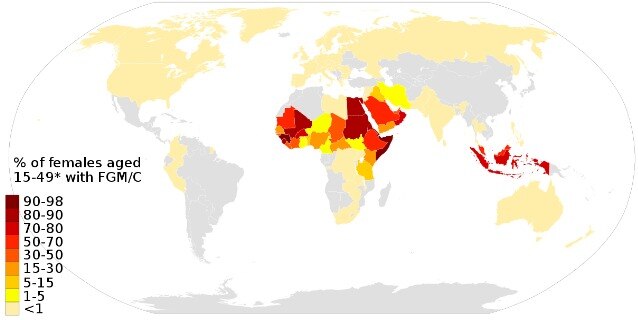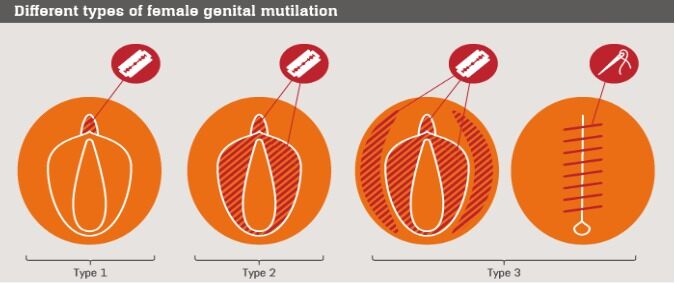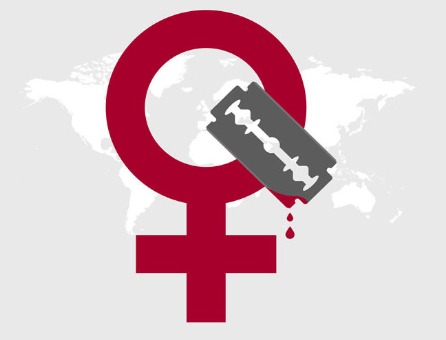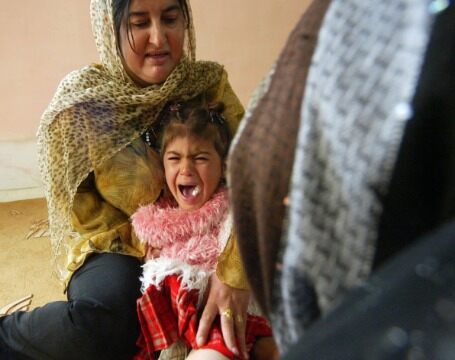Female genital mutilation (FGM) is a deeply entrenched cultural practice that involves the partial or total removal of the external female genitalia. This harmful tradition affects millions of girls and women worldwide, subjecting them to physical, emotional and psychological trauma. Despite international efforts to eradicate it, FGM persists in many communities perpetuated by cultural, religious, and social beliefs.
Recently, the UN agencies have reported that approximately 4.4 million girls worldwide are facing the threat of female genital mutilation in 2024. This equates to 12,000 cases every day. FGM is recognised as a severe violation of human rights and a form of gender-based violence.
Understanding FGM and its factors
The procedure of FGM varies depending on the cultural context and the preferences of the practitioners. It can involve different degrees of cutting, ranging from a symbolic nick to the
complete removal of the clitoris and labia, and in some cases, narrowing of the vaginal opening. Often FGM is performed without anaesthesia and in unsterile conditions, leading to severe pain, trauma, and immediate health risks such as bleeding, infection and even death.
Advocates of Female genital mutilation justify it as a rite of passage, a means of ensuring feminity, purity, innocence, marriageability, and social status. It is often linked to the control of women’s sexuality and reproductive health, perpetuating gender inequality and discrimination. The absence of comprehensive sex education, poverty and limited access to healthcare contribute to its continuation.
Global prevalence
Predominantly found in Western, Eastern, and North-Eastern Africa, as well as certain Middle Eastern and Asian countries, female genital mutilation has emerged as a global issue due to heightened migration, impacting girls and women in Europe, Australia, and North America. In Egypt, the practice is referred to as “Pharaonic circumcision”.

Despite legal prohibitions in many countries, enforcement remains a challenge, and covert operations continue. The World Health Organization estimates that over 200 million girls and women alive today have undergone FGM, with millions more at risk.
Impacts and their Victims
The impact of FGM is profound and multifaceted. Physically, it can result in immediate complications such as severe pain, bleeding, infections, and long-term health issues including urinary and reproductive problems, complications during childbirth, and psychological trauma. Socially and culturally, Female genital mutilation restricts women’s autonomy and agency over their bodies and reinforces harmful patriarchal norms surrounding female sexuality and purity.
There are many victims of this heinous crime. Waris Dirie, a Somali model, author, and activist, underwent FGM at the age of five and later shared her harrowing experience in her autobiography “Desert Flower”. An Australian activist and survivor of FGM, Khadija Gbla underwent this at the age of ten in her native country, Sierra Leone. Another example is Jaha Dukureh, a Gambian activist, who underwent FGM at the age of just one week old. Despite facing this traumatic experience, each one of these women emerged as a powerful advocate of FGM.
Status in India
Currently, there is no law in place in India specifically prohibiting the practice of female genital mutilation. However, unofficial reports suggest that FGM procedures are practised within the Bohra community, predominately in states such as Maharastra, Kerala, Rajasthan, Gujarat, and Madhya Pradesh.
In 2017, the Ministry of Women and Child Development stated in response to a petition in the Supreme Court that official data or studies supporting the existence of FGM in India were lacking.

Challenges in eradicating FGM
Challenging deeply entrenched cultural and social norms is often necessary to address FGM, as it is frequently practised as a tradition passed down through generations. Moreover, raising awareness and providing education about the physical and psychological health risks associated with Female genital mutilation is crucial, as many individuals within practising communities may not fully comprehend these consequences.
It intersects with gender dynamics and may be justified on religious and cultural grounds, contributing to its persistence. Additionally, the lack of comprehensive data collection and reporting on FGM prevalence poses a significant obstacle to understanding the extent of the problem and implementing targeted interventions effectively.
Stigma, social pressures, globalization, and migration also play roles, alongside a lack of comprehensive healthcare services and a generational divide in attitudes towards the practice. Addressing this practice requires community engagement, healthcare access, and support for survivors, while also promoting gender equality and challenging harmful beliefs and practices.
Global initiatives
Global efforts towards eradicating female genital mutilation have been spearheaded by the United Nations Population Fund and the United Nations Children Fund (UNICEF) since 2008. The UN General Assembly, in 2012, designated February 6th as the International Day of Zero Tolerance for female genital mutilation, aimed at amplifying efforts to eliminate this practice.
The theme for 2024 is “Her Voice. Her Future”, reflecting the focus on empowering women and girls affected by FGM. The United Nations aims to achieve full elimination of FGM by 2030, aligning with Sustainable Development Goal 5, which targets the elimination of all harmful practices, including child, early, and forced marriage, and FGM.
The Girls Generation, an African-led movement works to end FGM by mobilizing communities, advocating for policy change, and amplifying the voices of those affected. The End FGM European Network, brings together NGOs, survivors, and experts from across Europe to advocate for an end to FGM on the continent. The African Union has adopted various resolutions and declarations for the elimination of this practice across the continent.

Conclusion
Moving ahead, it is essential to strengthen laws explicitly prohibiting female genital mutilation and enforce penalties for its practices. The government should ensure rigorous enforcement through law enforcement agencies. Furthermore, launching comprehensive awareness campaigns is vital to educate about the harmful physical, psychological, and sexual effects of FGM.
These initiatives must target both affected communities and broader society. Additionally, integrating FGM prevention and response measures into the international human rights framework is critical to upholding the rights of women and girls. Through these concerted efforts, progress can be made towards eradicating FGM and promoting the well-being of all individuals.
-TANYA SHAH
MUST READ: SUPREME COURT STRIKES DOWN ELECTORAL BOND SCHEME, CITES VIOLATION OF RIGHTS





